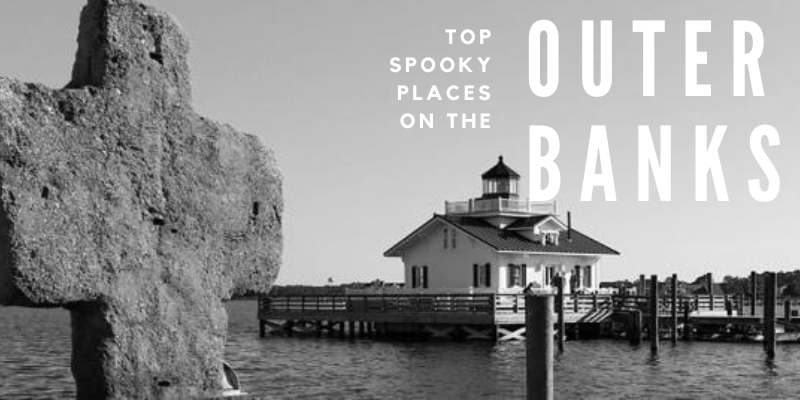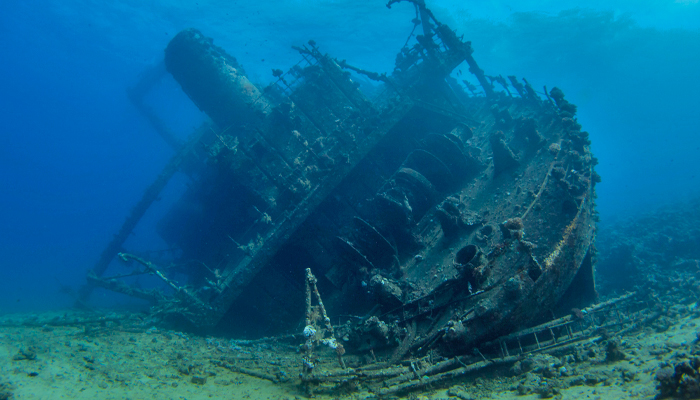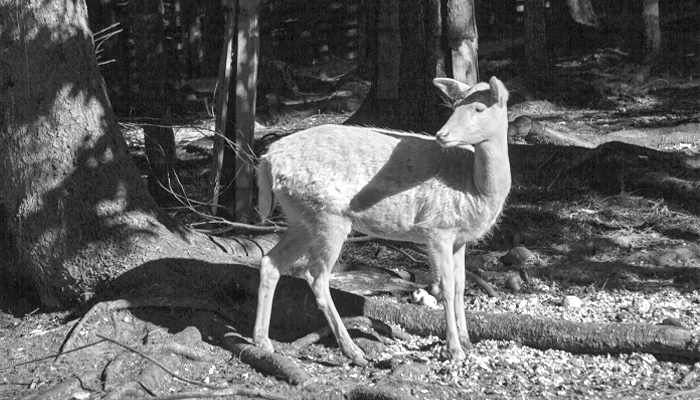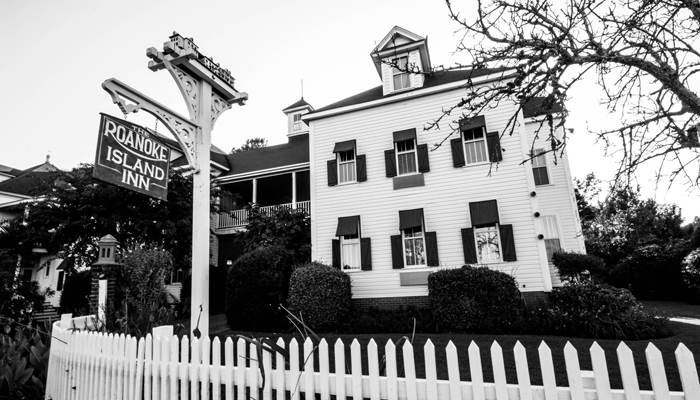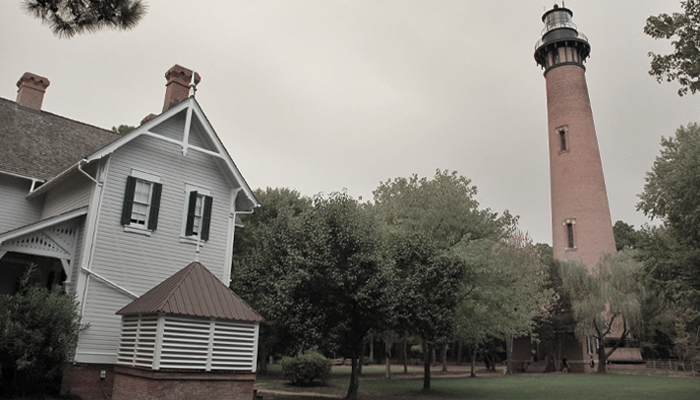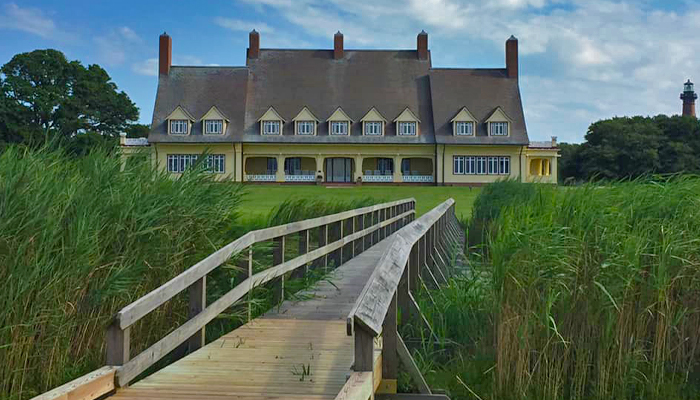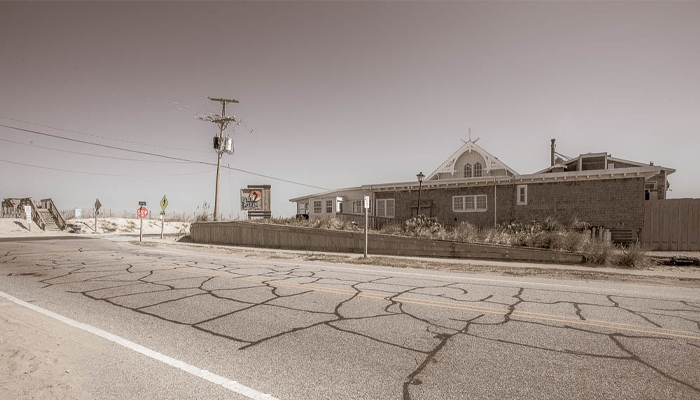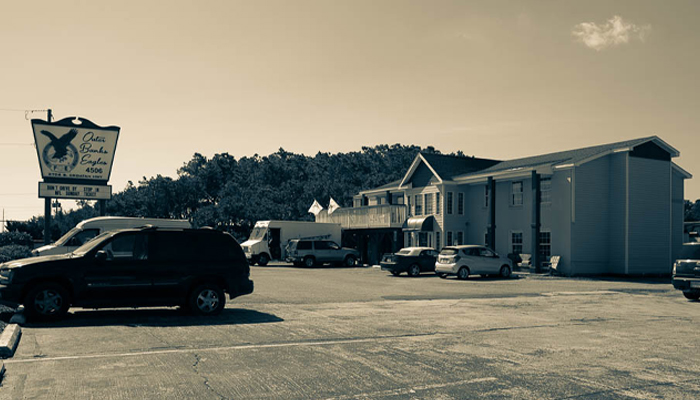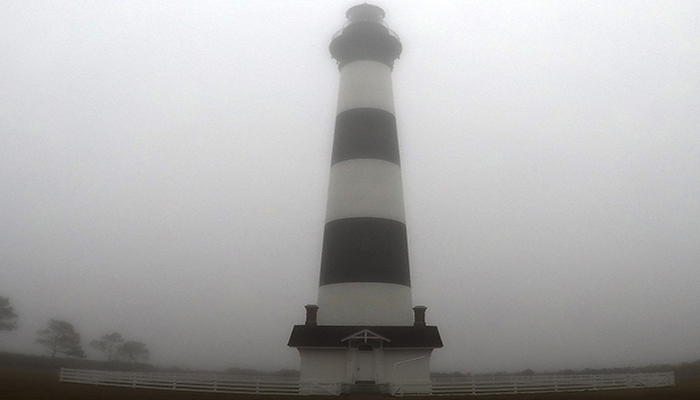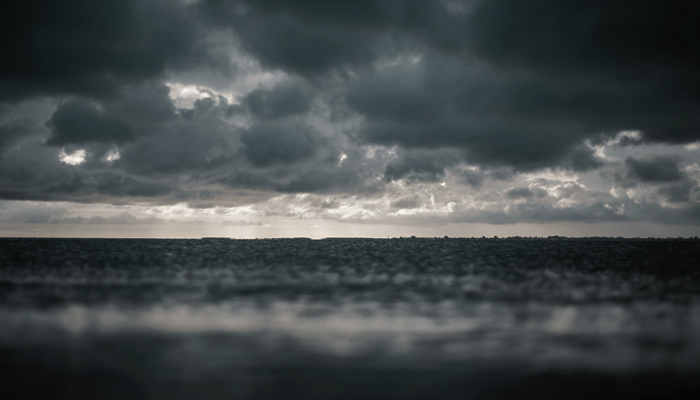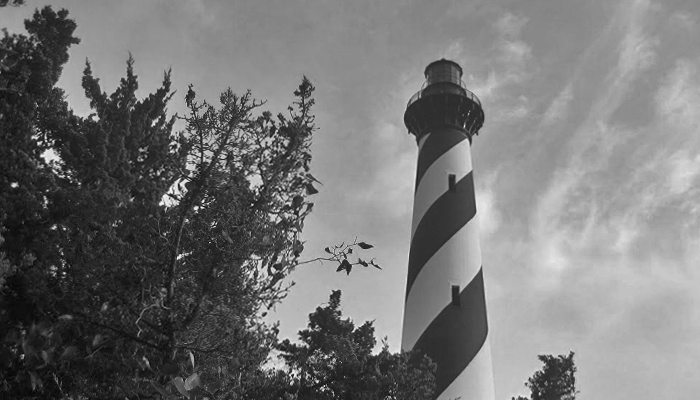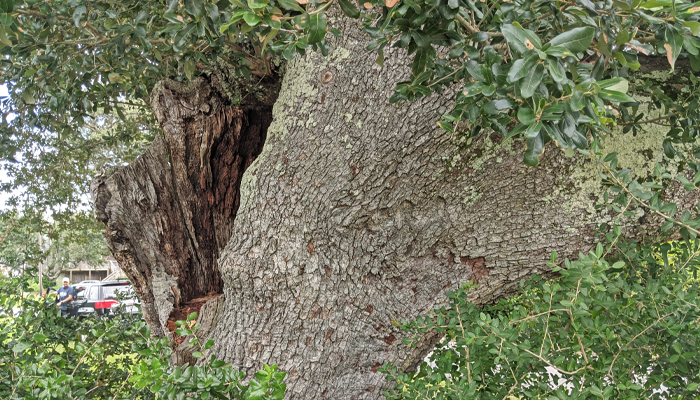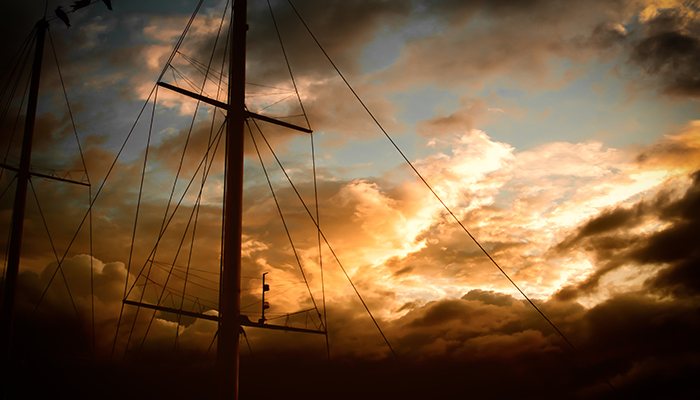Top Spooky Places on the Outer Banks
Tens of thousands of people flock to the Outer Banks each year to get away from the hustle and bustle of everyday life and enjoy a week-long vacation with family and friends. Although the area is well-known for being one of the premier vacation destinations on the east coast, the OBX is also known by locals and visitors alike as being haunted. With such a turbulent past filled with everything from pirates and devastating storms to shipwrecks and mysterious disappearances, there are several places that become just a little “spookier” after dark. Here are some local legends and a list of the creepiest places on the Outer Banks that you can check out (or avoid) during your next vacation.
The Ghost Ship of the Outer Banks
Graveyard of the Atlantic
One of the most difficult places to navigate a boat in the nation, the water off the coast of Cape Hatteras, also known as the Diamond Shoals, has caused both shipwrecks and human casualties. The area’s strong currents, hidden sandbars and potential for severe weather systems led to plenty of ships lost at sea earning the area the nickname “Graveyard of the Atlantic.” Unfortunately, it wasn’t just the geography of the land or even the lack of proper navigation systems that made these waters perilous.
The region was the battleground of plenty of violent tragedies throughout history such as the American Civil War, World War I, World War II and the terrifying reign of Atlantic pirates. Well over 1,000 shipwrecks have been recorded since the early 1500s with some sources suggesting the number of lost ships reaches as high as 5,000.
Among the better-known “creepy” tales among these losses is that of the Carrol A. Deering which sank in 1921. The Cape Hatteras Coast Guard spotted the ship on January 31, noticing it had run aground with sails fully set and lifeboats missing. It took several days for rescue boats to reach the ship due to rough waters but when they did board the ship, the scene would go down in maritime history as a baffling mystery. The Deering had been entirely abandoned by the crew—personal belongings, navigational equipment, important documents and the ship’s anchors were gone with them. Yet, there was food left out on the stove and disarray in the Captain’s Quarters.
Although there are dozens of theories as to what happened to the 11 crew members on board (ranging from hurricanes, Rum Runners, Russian communists, Pirates, mutiny and even something supernatural potentially related to the Bermuda Triangle), no trace of them has ever been found despite extensive searches and investigations across the Eastern Seaboard by the Coast Guard, FBI and other government agencies. In 1922, the investigation of the “Ghost Ship” was officially closed without a conclusion. Today, the fate of the Deering’s crew remains a mystery.
To learn more about the Graveyard of the Atlantic, click here.
Legend of the White Doe
Roanoke Island
What’s more head-scratching than the disappearance of an entire colony? It’s been four centuries since the disappearance of those men, women and children of The Lost Colony including Virginia Dare, the first child born in America to English parents. While the fate of these colonists remains unknown, one theory is that they were assimilated into local communities. Virginia Dare is believed to have survived and lived with the local Croatoan Tribe. While living peacefully among the area natives, she grew up into a beautiful woman earning the attention of many, including a witch doctor. Angry at her refusal toward his romantic advances, legend has it that he transformed Virginia into a white doe. The ghost of Virginia Dare is said to roam Roanoke Island to this very day in the form of an elusive white deer which has been seen on occasion by both locals and visitors.
Roanoke Island Inn
Roanoke Island
Roanoke Island Inn is famously associated with tales of very strange events happening around the property. Today, the historic inn is owned by Jason & Lauren Borland, who purchased the property in early 2018. Although the inn that stands today at 305 Fernando Street in Manteo is made up of the original building, it has been renovated and expanded over the years. The beautiful home was first built in the 1860s by Asa and Martha Jones.
The Jones’ son, Roscoe, was a local well-respected postal worker who lost his job in the early 1900s. Some say that he was so humiliated that he became a recluse and mostly confined himself to his room until he died. It wasn’t long after his death that reports of a man, donning a postal worker’s uniform, was seen coming and going around the inn. Innkeepers and guests have also reported hearing footsteps, radios turning on and off, and blinds moving by themselves.
North Room in the Lightkeeper’s Quarters
Currituck Beach Lighthouse, Corolla
Before the days of automatic lights, lighthouses required lightkeepers to operate the beams by hand. These keepers often lived in homes beside the lighthouse called the lightkeeper’s quarters. For the Currituck Light Station in Corolla, the Johnson family took over this job beginning in 1916. George Johnson’s adopted daughter, Sadie, was known to live in the North Room of the building. One day in 1927, she didn’t come home and the following day, her body washed ashore. This death would set in motion a series of strange activity and tragic circumstances surrounding that very room.
Sometime after that incident, a friend of a new keeper’s wife came to stay with the family and slept in the North bedroom. Sadly, the visitor was infected with a mysterious and ghastly illness and passed away in that room before she could heal. The final family that inhabited the house also experienced a tragedy. The lighthouse keeper’s wife was quarantined in the North bedroom after contracting tuberculosis and soon lost her life. Visitors have reported a spooky, chilled feeling upon entering the room while others who have stayed there report the sheets being tugged and hearing a voice. It’s hard to say if there is any supernatural phenomenon to blame for the deaths in that room or if the room is simply haunted by those that passed away there but it certainly has a troubled and shadowy past.
The Whalehead Club
Corolla
Located at 1100 Club Road in Corolla is the 21,000 sq. ft. mansion overlooking the Currituck Sound. Originally built by Edward and Marie Knight as a hunting retreat in 1925, the building is revered for its historic Art Nouveau-style architecture. In the 90’s, the building was restored to its original condition after being used for a variety of purposes over the years including a Coast Guard shelter, boys’ correctional school, and rocket fuel testing site. For two decades, it even sat abandoned. Today, the Whalehead Club is open to visitors but despite its beauty and architectural value, many people feel there is something eerie about the building.
Numerous visitors have claimed to smell cigar smoke near the portrait of Edward Knight—a man very well known for enjoying cigars. Another witness claimed that someone grabbed his leg when he was walking on the second floor alone. Once, a young child even ran from the house after claiming a little girl tried to grab him in the basement despite no adult seeing anyone else around. Other reports of strange activity are pots and pans banging together in an empty kitchen and doors slamming shut on their own. Reports of paranormal activity at the building are so common that paranormal research professionals have conducted investigations in the home, several confirming the basement seems to be a hotbed of activity.
Black Pelican Restaurant
Kitty Hawk
Even a much-loved restaurant like the Black Pelican isn’t safe from eerie tales and a troubled history. The restaurant building itself was once a Lifesaving Station in the late 1800s giving it quite an extensive history. In July of 1884, a dispute unfolded between Station Keeper, James Hobbs, and his young surfmen, T.L. Daniels, that led to Hobbs fatally shooting Daniels with a revolver. Although the details of the dispute range from an account of constant disobedience by Daniels to an account of Daniels disrespecting Hobbs wife, all stories end up with Daniels shot to death on the floor near where the front desk of the restaurant lobby sits today.
Although his body was supposedly buried at sea and Hobbs was cleared of any wrongdoing, Daniels may have never left the building. Workers and diners at the restaurant have claimed seeing blood on the wall, hearing footsteps, witnessing doors closing by themselves and generally getting a creepy feeling, especially at night. Wine bottles and glasses have also reportedly flown off the tables and some witnesses even report seeing the apparition of Daniels himself.
Eagles Lodge
Nags Head
Today, the building at 2706 S. Croatan Hwy. in Nags Head is owned by the Eagles FOE #4506 Aerie Club. Before that, it has been the FireFly Restaurant, Almost Eleven Restaurant, and Mykonos Restaurant and Bar, among others. So why has the building changed hands so many times since it was first built, despite being a large space right on the main bypass? Some say that it’s due to the persistence of pesky ghosts who may inhabit the Lodge.
Throughout the years, locals working in the various restaurants at that site have reported everything from wine bottles and wine glasses flying off the counter on their own to seeing black shadows moving around the building. Some reports even say that guests are sometimes mysteriously locked in the bathrooms—not so great for business.
The Disappearance of Theodosia Burr
Nags Head
The tale of Theodosia Burr involves mystery, art, and a ghostly apparition. The woman in question, Theodosia Burr Alston, was the daughter of Vice President Aaron Burr. From both family money and marriage, Theodosia was wealthy and was said to have been very intelligent and cultured. Unfortunately, she suffered various illnesses and depression causing her to withdraw from her normal social life, especially after the loss of her child.
In December 1812, she planned to pay a visit to her beloved father in New York via the schooner Patriot which was departing from Georgetown, SC. Unfortunately, she would never arrive in New York. Many theories exist as to what happened to the Patriot ranging from it being an unfortunate casualty to the War of 1812 to the schooner running aground on the Diamond Shoals. Regardless, Theodosia was never seen again.
Or was she? According to legend, Theodosia may have survived whatever happened at sea and found herself in Nags Head. One day, an elderly couple stumbled across a woman in a white gown clinging to a large portrait. Confused and unable to express what had happened or who she was, the woman was taken in by the couple who cared for her. At one point, she became so ill that the couple requested a house call from an out-of-town doctor. Unable to pay for the visit, they offered the doctor the portrait instead, knowing he was a collector of fine arts who would recognize its value. As he accepted, the sick woman suddenly jumped up, claimed the portrait as her own and ran out into the sea where she was never seen again. The next day, the portrait washed back up on shore.
Another account tells of how “wrecker” Joseph Tillett found the portrait when scavenging a ship that had washed up on the OBX coast. Although there are variations in the folklore as to who first discovered the painting, it eventually was obtained by Dr. William Pool in 1869 who reached out to several members of the Burr and Alston family in an effort to confirm that the portrait’s subject was Theodosia. As such, many also believe that the discovery of this painting confirms one way or another, Theodosia was lost at sea. Today, the portrait is hanging in the Lewis Walpole Library at Yale University.
Regardless of how Theodosia met her untimely end, it seems she is sadly still looking for her lost portrait. Occasionally during misty mornings on the beach in Nags Head, witnesses have claimed to see a woman in a white gown walking along the beach. If you decide to approach her, she will disappear into the mist.
Legend of the Goat Man
Nags Head Woods
A long time ago, a lonely man who enjoyed his solitude lived in a small building in Nags Head Woods and spent his time raising goats, earning him the name “Goat Man.” One day, a group of teenagers went back to the old man’s house to antagonize him, as teenagers often did, but since he wasn’t home, they killed his goats instead. As he returned, the man sought revenge and turned his wrath on the teens, chasing after them and throwing an axe their way. Some even say that he took on the form of a half-goat half-man with a human body and a goat head. Although no one is really sure what happened to the man, legend says that till this day, if you talk about him or visit his house, he will chase you, making him a “boogeyman” of sorts.
There is a small, yellow hunting cabin located in Nags Head Woods that is rumored to have once been the home of the Goat Man. Unfortunately, the building is often vandalized and local town officials are considering tearing the structure down.
Bodie Island Lighthouse Gatekeeper's Cottage
Nags Head
When a lighthouse is rumored to be named after the dozens of dead corpses that washed ashore, it’s pretty much guaranteed to have some sort of mystery surrounding it. Bodie Island Lighthouse (pronounced “body”) stands at 156-ft. tall and is located on the sound side in Nags Head among the marshland. Visible for a range of up to 19 nautical miles, the lighthouse as it stands today has been a guiding light since it was constructed in 1871 but like many of the local lighthouses, it was not the first structure built. The first structure was abandoned after falling into disrepair and the second was destroyed during the Civil War by the Confederate Army to prevent Union soldiers from utilizing the tower as a lookout. With such a history, one might expect some lingering spirits but like its northern neighbor in Corolla, it’s actually a building on the grounds—the old gatekeeper’s cottage—and not the lighthouse itself that seems to be the source of unexplained phenomena. The cottage, which is now a giftshop, has long been associated with a strange noise. Witnesses have reported hearing a knocking sound in the afternoon around 4:00 PM that appears to be coming from behind the large fireplace that has been bricked over. What, or who, is back there?
The Grey Man of Hatteras
Buxton
Some spirits exist to frighten the living while others are just going about on their daily routine. Yet, some ghosts appear for another reason—to send a message. One such apparition is that of “The Grey Man of Hatteras.” Witnesses to this well-known spirit have reported sightings since the early 1900s. Legend says that during Hurricane season, just as the earliest winds and rain of an approaching storm reach the Outer Banks, sometimes an apparition will appear out of nowhere on the beaches around Cape Hatteras, and will fade away just as quickly. Supposedly, he appears in the shape of a man, shadowy grey in color, but only before a particularly dangerous storm. More of a harbinger than a ghost, the sighting of the Grey Man is taken very seriously and serves as a warning to the islanders to prepare for a hard hit.
Many people believe he was a sailor lost at sea to a violent hurricane and does not want others to suffer the same fate. Others say that it isn’t a ghost of a man at all but rather an expression of nature’s energy approaching the island. In the modern world, it’s much easier to track hurricanes and get a general idea of what level of intensity the storm will be as it approaches but people still look for the Grey Man today as a sign of whether or not the storm will be exceptionally dangerous. Some people even claim to have captured him in photos or video.
Ghost Cat of the Cape Hatteras Lighthouse
Buxton
Nearly everyone who visits the Outer Banks has made at least one trip down Hatteras Island to see the famous Cape Hatteras Lighthouse in Buxton. Sitting near the edge of a narrow island just off a coast fraught with treacherous shoals, the Cape Hatteras Light has served as a beacon of hope and light in the darkest of nights for decades. However, even important landmarks have mysteries and this lighthouse is no different.
Perhaps you’ve visited the lighthouse and encountered a friendly black and white cat. Stray cats and roaming pets are rarely cause for concern, especially when one walks up to rub up against you. You might even get to pet it as it walks by. But then, as you try to pick it up, it vanishes. Now that is a bit concerning. However, many locals believe this sociable ghost was once the pet of a former light keeper who has chosen to still watch over the grounds for the last 100+ years.
The Cora Tree
Frisco
In the 1700s, a woman named Cora, along with her baby, took residence in a small home near modern-day Snug Harbor Dr. in Frisco. No one knew where she came from and she wasn’t related to anyone on the island so there was a lot of suspicion about the woman early on, especially considering she stayed to herself. After a while, it seemed that Cora was always around when some sort of misfortune struck—misfortune such as fisherman being unable to catch any fish and a cow going dry that she had just touched. Then, things went from bad to worse when Captain Eli Blood, from Salem, MA, and his brig Susan G., ran into trouble in local waters. As he was staying in town, he heard tales of the strange woman and suspected she was a witch.
One day, a body of a young man washed up on the beach. Supposedly, small female-like footprints were leading away from the body and some legends even go so far as to say the numbers “666” were burned into his forehead. Captain Blood captured Cora and subjected her to three tell-tale tests of a potential witch: whether or not she would float in the water, whether or not a knife could cut her hair, and a peculiar exercise of mixing the blood of several men in a bowl for a clarification of guilt. Cora “failed” all three tests and was deemed to be a witch so she and the baby were tied up to a tree to be burned.
Luckily, there was one man there to stop the madness. Captain Tom Smith detested the guilty verdict and demanded that Cora be tried in a proper court of law. However, during this distraction, it is said that the baby suddenly changed, shape-shifting into a black furry cat, and darted away. Upon seeing this, Captain Blood immediately rushed to light the temporary pyre but before he could do so, a large bolt of lightning struck the tree creating lots of smoke and confusion. As the smoke cleared, Blood saw that Cora had vanished. In her place were the letters C O R A scorched deep into the tree. Although Cora was never seen again, the letters are still visible on that same tree today. When a road was eventually installed, the town split the lanes into two parts around the famous tree so they wouldn't have to tear it down.
*This legend was featured on Travel Channel’s show Monumental Mysteries. Click here to check it out!
Teach’s Hole
Ocracoke Island
There are very few who don’t know the tales of the infamous Blackbeard the Pirate, or Edward Teach. What you may not know is that he made his home right here on the Outer Banks at a residence on Ocracoke Island. His reign of terror on the Atlantic Coast lasted from 1716 until 1718 when his violent reputation finally became too much for Virginia’s Governor, Alexander Spotswood. Spotswood ordered captain John Maynard to track down Blackbeard’s ship and end his reign once and for all.
Maynard caught up to Blackbeard and his crew on November 22, 1718, in an inlet off Ocracoke and attacked. Blackbeard was both shot and stabbed to death and then beheaded. His head was hung up on the bowsprit of Maynard’s ship and his body was tossed overboard. Legend says his lifeless body swam around the ship three times before finally sinking.
Today, that same inlet is known as Teach’s Hole and some witnesses report seeing a strange light moving beneath the water’s surface—Blackbeard’s spirit trapped in the sea searching for his missing head. Some have even heard a disembodied voice asking, “Where’s my head?”
The Flaming Ship of Ocracoke
Ocracoke Island
Another well-known story of a ship whose passengers met their fate off the coast of the Outer Banks is that of the “Flaming Ship of Ocracoke.” During the height of religious war between Protestants and Catholics, French troops raided the Middle Rhine region of Germany forcing over 10,000 German Protestants, known as “Palatines,” to migrate to England to escape persecution. Overwhelmed with refugees, the British government began shifting the Palatine immigrants around with some remaining in England, some settling in Ireland and many sent to the New World colonies. This story involves such a migration to North Carolina on one fateful September night. Although the majority of Palatines were known to be very poor, those on this particular voyage to Ocracoke happened to be wealthy and brought jewels and gold coins on their journey with the hopes to start a new life with their family riches.
When the ship neared port around Ocracoke Inlet, the Palatine passengers on board, who had initially concealed their treasure, revealed their wealth in their haste to depart making it evident to the captain, a former pirate, and his crew that they were actually quite wealthy. The captain told the passengers they would actually not depart until the following morning and that night, as the passengers slept, the crew killed everyone on board and raided their belongings. The small crew boarded a lifeboat with their treasure and headed for shore after setting the boat on fire. Within a few minutes, the Captain looked back to make sure the ship was sinking but instead, saw the ship completely engulfed in flames barreling straight towards him and echoing with cries of pain, supposedly steered by the ghosts of the Palatines on board seeking revenge. The boat, weighed down by the gold on board, was unable to escape and collided with the flaming ship.
Other than one or two individuals who supposedly survived by clinging to pieces of the lifeboat, the greedy crew all drowned at sea. Unfortunately, the souls of the Palatines seem to be trapped in a residual loop since legend has it that every year on the night of the first new moon in September, a flaming ship makes three northeast runs from shore to sea before vanishing completely. Some eyewitnesses even report hearing faint moans and screams coming from the ship.

About the Author: Jessie has been coming to the Outer Banks since she was just 5 years old. She loved it here so much that she finally relocated in 2018. Now her mission is to show the world that the Outer Banks is an incredible place that everyone should experience. When she isn't working, you can find Jessie hanging out with her friends, chilling at home with a good book, or discovering a new Outer Banks adventure.

